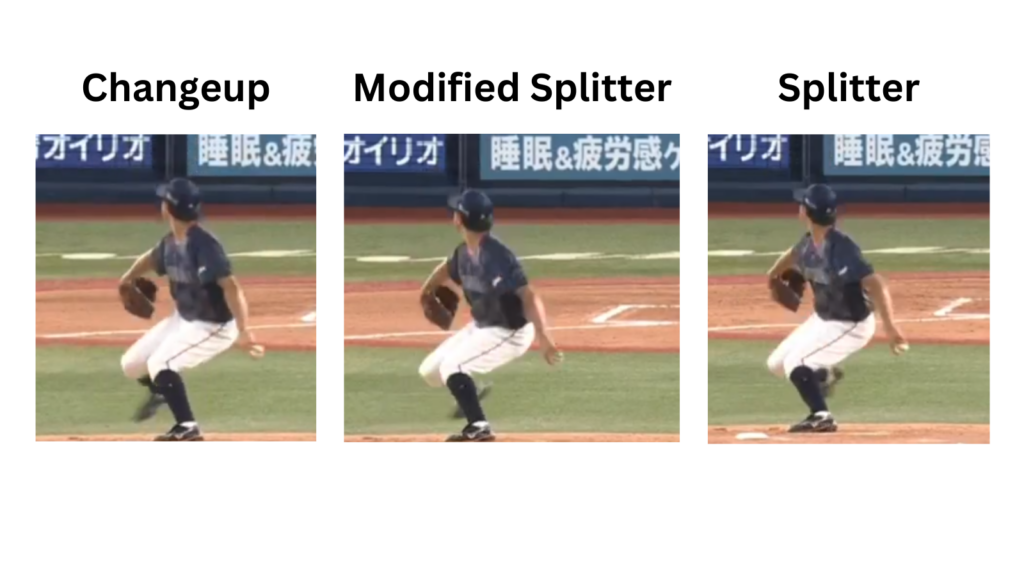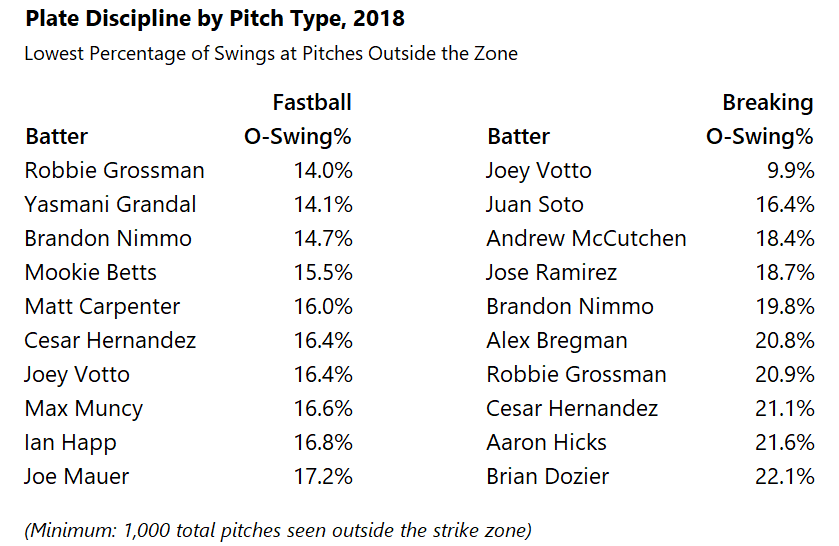Shōta Imanaga was posted by the Yokohama Baystars after spending eight seasons pitching in NPB’s Central League. He is coming off his two best seasons as a pro and heads into free agency at 30 years old.
| Season | IP | ERA | Strikeouts | Walks | SO/W |
| 2022 | 143 2/3 | 2.32 | 132 | 29 | 4.6 |
| 2023 | 148.0 | 2.80 | 174 | 24 | 7.3 |
Imanaga is listed at the same height and weight as fellow NPB posting mate Yoshinobu Yamamoto, at 5-10 and 176 pounds. The lefty possesses some of the best pure stuff in the world. His 68% strike rate would have been in the top 10 in MLB among qualified starters in 2023.
This final list of Stuff+ leaders from the World Baseball Classic is a mix of notable MLB and NPB pitchers:
Final WBC Stuff+ leaders, minimum 28 pitches per appearance:
1) Shoto Imanaga
2) Yoshinobo Yamamoto
3) Jose De Leon
4) Julio Urias
5) Yu Darvish
6) Sandy Alcantara
7) Cristian Javier
8) Jose Urquidy
9) Shohei Ohtani
10) Luis Garcia
11) Roki Sasaki— Eno Sarris (@enosarris) March 22, 2023
What does he do well?
Imanaga’s arsenal is as deep as it is potent, highlighted by a high-carry four-seamer with over 20 inches of induced vertical break (IVB). The pitch cuts through the zone staying on plane and causing swings and misses over the top of barrels.
Imanaga also has multiple variations of pitches that make him a tough at-bat for hitters. He led NPB in K rate at 29% and was the strikeout leader in the Central League with 174. Imanaga has multiple chase pitches, with sources such as Deltagraphs noting that hitters chased outside of the zone over 35 percent of the time against him in 2023. A 35% chase rate would likely rank in or around the Top 20 among MLB starters if Imanaga could do that in MLB.
Mechanics
Imanaga deploys a paused leg lift, as many Japanese pitchers do. This allows him to create rhythm and balance in his delivery. Imanaga brings his leg up towards his chest before quickly settling around waist height with a tiny pause. He then slightly turns his foot towards the rubber, creating counter-rotation in his hips as he shifts his weight and momentum forward.
Imanaga sinks deep into his lower half and back leg before pushing down the mound. He has solid repeatability and good extension relative to his height because of his lower-half use.
The Arsenal (2023 usage and Average Velocity)
Fastball 59%, 91.8 mph
Imanaga relied heavily on his fastball, throwing his four-seamer close to 54% of the time and his two-seamer around 5%. The four-seam has elite fastball characteristics as mentioned earlier and even though Imanaga loved to work down in the zone more than up, batters swung underneath his fastball in both areas of the zone.
Up
Down
The pitch racked up 96 Ks in 2023 and performed well with a .234 opponents’ batting average. But even in Japan’s dead ball era, Imanaga has been plagued by the HR ball. In the last two seasons, he finished with 14 and 19 HR against, respectively, including playoffs, with 26 of them surrendered on a fastball in that span.
The likely culprit of this is throwing too many fastballs in hitters’ counts, with shaky command at times and high fly ball rates.
US of TREA! #WorldBaseballClassic pic.twitter.com/r9qRQ8l1g8
— World Baseball Classic (@WBCBaseball) March 21, 2023
Less reliance on his four-seamer as well as pitching more up in the zone could help him out with his high-carry fastball. He also throws the pitch for a strike 73 percent of the time, so working it out of the zone could mitigate the damage as well. Still, he needs better command of the pitch to accomplish this. He has above-average command of the pitch overall, but there are examples of fastballs leaking to the middle of the plate.
Here’s a dotted fastball in the 9th inning of his no-hitter last season:
Slider 16%, 81.5 mph
Imanaga throws two variations of a slider that are grouped together when we refer to his pitch usage. His sweeper is used less often, though he has fluctuated its usage from game to game the past two seasons. His sweeper is on the lower end of velocity in the mid-70s, and what I would call his “true slider” sits closer to 80 mph.
Here are the two variations:
Sweeper:
Slider:
His sweeper and slider have good shapes to them and while more velocity would be nice they still fit well in his arsenal, giving him three varieties of speed moving away from LHBs with the inclusion of his cutter.
The sliders combined for his second-most strikeouts. They should continue to be valuable weapons for him, versus LHBs.
Splitter 12%, 83.2 mph
Probably the most intriguing pitch Imanaga throws is his splitter. He actually throws with two different splitter grips to go along with his changeup.
Here are the three pitch grips all from the same game. They have slight differences in grip most noticeable at the bottom of his arm swing. 
You can see with the modified split Imanaga puts his middle, ring, and pinky finger together. With the traditional splitter, he has his pinky and ring finger tucked behind the ball. He’s thrown the two different splitter grips at different times from what we have charted since the middle of July 2022 but he’s gone back to more of the modified splitter in 2023.
With MLB baseballs being slightly larger and less tacky than NPB balls, it will be worth following what grip he might find most comfortable. Masahiro Tanaka famously battled with finding a comfortable splitter grip throughout his MLB career.
The splitter is a real swing-and-miss pitch for Imanaga with over a 40% whiff rate in 2023. The velocity separation of the pitch from his fastball causes batters to not only whiff but also hit a fair amount of ground balls (a 50% ground ball rate)
The velocity dip from his fastball also causes a lot of weird swings and weaker contact even on fly balls.
Curveball 7%, 73 mph
Imanaga’s curve is a slow loopy pitch in the 70s with some sweep to it. It has a lazy arc and he primarily uses it as a change of pace pitch to keep hitters off of the rest of his arsenal.
Imanaga also has a very slow curveball (in the 50s in terms of MPH) that he breaks out on rare occasions (5 times in 2022, 8 in 2023). The pitch is used to freeze batters. He might up the usage of this slower curve in MLB just to keep hitters honest.
Cutter 4%, 86.7 mph
Imanaga’s cutter was his worst-performing pitch in 2023, though only 21 at-bats ended with one. He actually abandoned the pitch for the first couple of months of the season before returning to use it in June with 5% usage the rest of the season. In 2022 he actually was throwing more cutters than sliders and the pitch was much more useful for him then than in 2023.
He throws a harder version of his slider that is tagged as a cutter. It’s more of a hybrid and he routinely will use it more in slider situations, throwing it down and away. That’s something I noticed when I wrote up his 2022 no-hitter vs Nippon-Ham in June 2022. He threw 24 cutters that night with no sliders or sweepers.
Changeup 2%, 81.5 mph
Imanaga’s changeup is his least-used pitch. He threw 32 of his 52 in one game against Rakuten in May.
If Imanaga can’t grip his splitter with an MLB ball maybe he goes to more of a changeup grip or he finds a way to mix the change in more. He also had no fear throwing the pitch left on left, which speaks to his pitchability but that is still probably the toughest pitch to execute in baseball.
Here’s back to back changes against Maikel Franco with an 8-mph difference:
Just another example of Imanaga’s pitchability.
What to Expect
Imanaga is a strike-throwing lefty with some of the best pure stuff in the world because of his pitch movement and ability to spin the baseball. Even without high-end velocity or command, Imanaga throws strikes and punches tickets which should lead to success in MLB.
He has mid-rotation upside right now. His spot in an MLB rotation will be determined by whether he can keep the ball in the ballpark.

